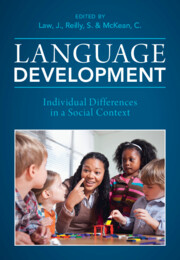33 results
Head and Neck Cancer: United Kingdom National Multidisciplinary Guidelines, Sixth Edition
-
- Journal:
- The Journal of Laryngology & Otology / Volume 138 / Issue S1 / April 2024
- Published online by Cambridge University Press:
- 14 March 2024, pp. S1-S224
- Print publication:
- April 2024
-
- Article
-
- You have access
- Open access
- HTML
- Export citation
Agricultural Research Service Weed Science Research: Past, Present, and Future
-
- Journal:
- Weed Science / Volume 71 / Issue 4 / July 2023
- Published online by Cambridge University Press:
- 16 August 2023, pp. 312-327
-
- Article
-
- You have access
- Open access
- HTML
- Export citation
Copyright page
-
- Book:
- Language Development
- Published online:
- 11 August 2022
- Print publication:
- 25 August 2022, pp iv-iv
-
- Chapter
- Export citation
Index
-
- Book:
- Language Development
- Published online:
- 11 August 2022
- Print publication:
- 25 August 2022, pp 561-564
-
- Chapter
- Export citation
Tables
-
- Book:
- Language Development
- Published online:
- 11 August 2022
- Print publication:
- 25 August 2022, pp x-xii
-
- Chapter
- Export citation
Introduction
-
- Book:
- Language Development
- Published online:
- 11 August 2022
- Print publication:
- 25 August 2022, pp 1-40
-
- Chapter
- Export citation
Figures
-
- Book:
- Language Development
- Published online:
- 11 August 2022
- Print publication:
- 25 August 2022, pp vii-ix
-
- Chapter
- Export citation
9 - Cognitive Competencies and Signals of Risk
- from Part One - Factors Influencing Language Development
-
-
- Book:
- Language Development
- Published online:
- 11 August 2022
- Print publication:
- 25 August 2022, pp 193-230
-
- Chapter
- Export citation
Contents
-
- Book:
- Language Development
- Published online:
- 11 August 2022
- Print publication:
- 25 August 2022, pp v-vi
-
- Chapter
- Export citation
Part Two - Continuity and Change
-
-
- Book:
- Language Development
- Published online:
- 11 August 2022
- Print publication:
- 25 August 2022, pp 257-346
-
- Chapter
- Export citation
A Tribute to Our Friend, Colleague and Fellow Editor, Professor James Law
-
- Book:
- Language Development
- Published online:
- 11 August 2022
- Print publication:
- 25 August 2022, pp xv-xviii
-
- Chapter
- Export citation
23 - Equity and Access to Services for Children with Language Difficulties
- from Part Three - Impact, Intervention and Equity
-
-
- Book:
- Language Development
- Published online:
- 11 August 2022
- Print publication:
- 25 August 2022, pp 539-560
-
- Chapter
- Export citation
Contributors
-
- Book:
- Language Development
- Published online:
- 11 August 2022
- Print publication:
- 25 August 2022, pp xiii-xiv
-
- Chapter
- Export citation
1 - Language Development
- from Introduction
-
-
- Book:
- Language Development
- Published online:
- 11 August 2022
- Print publication:
- 25 August 2022, pp 3-22
-
- Chapter
- Export citation
19 - A Review of Interventions to Promote Language Development in Early Childhood
- from Part Three - Impact, Intervention and Equity
-
-
- Book:
- Language Development
- Published online:
- 11 August 2022
- Print publication:
- 25 August 2022, pp 443-469
-
- Chapter
- Export citation
20 - Interventions to Promote Language Development in Typical and Atypical Populations
- from Part Three - Impact, Intervention and Equity
-
-
- Book:
- Language Development
- Published online:
- 11 August 2022
- Print publication:
- 25 August 2022, pp 470-494
-
- Chapter
- Export citation

Language Development
- Individual Differences in a Social Context
-
- Published online:
- 11 August 2022
- Print publication:
- 25 August 2022
Reflections of the French nasal vowel shift in orthography on Twitter
-
- Journal:
- Journal of French Language Studies / Volume 32 / Issue 2 / July 2022
- Published online by Cambridge University Press:
- 13 July 2022, pp. 197-215
-
- Article
- Export citation
‘They deserve a treat’: the nature and antecedents of parental licensing surrounding children’s physical activity
-
- Journal:
- Public Health Nutrition / Volume 24 / Issue 8 / June 2021
- Published online by Cambridge University Press:
- 28 August 2020, pp. 2098-2108
-
- Article
-
- You have access
- HTML
- Export citation
Nonchemical annual bluegrass (Poa annua) management in zoysiagrass via fraise mowing
-
- Journal:
- Weed Technology / Volume 34 / Issue 4 / August 2020
- Published online by Cambridge University Press:
- 13 January 2020, pp. 482-488
-
- Article
-
- You have access
- Open access
- HTML
- Export citation

